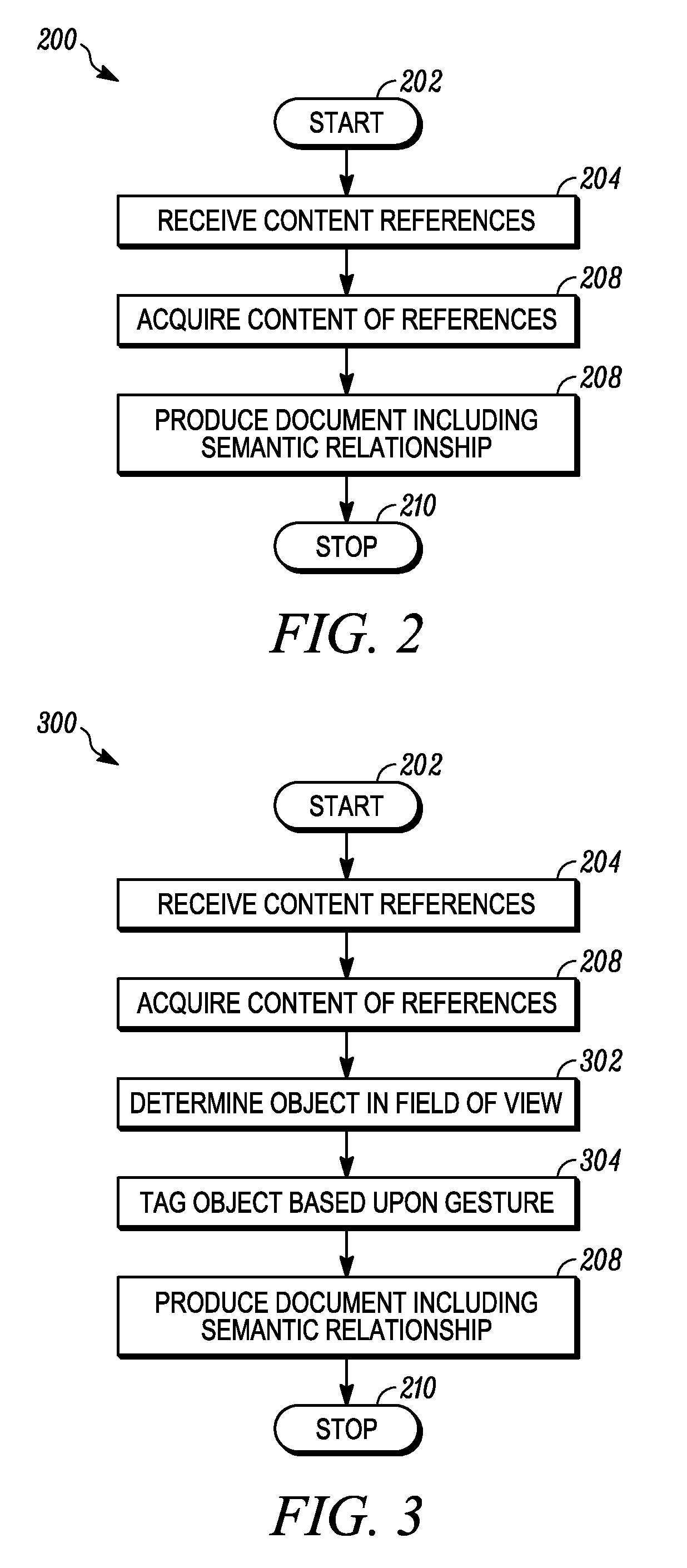[0018]Embodiments of the present invention include information systems and methods that capture and utilize
semantics. In an embodiment a semantic
service system provides a framework for users to share, organize, filter and find information with innovative, flexible ways to use their own vocabularies and views of the world. A semantic
service system may consist of services, browser plug-ins and other components that support users in creating, saving, sharing and viewing semantic objects, providing different presentations that combine information from other services, providing user interfaces to view semantic objects and combined information in new, flexible, and different ways.
[0020]A semantic service
system may facilitate user created combinations of topics, bookmarks, annotations and the like. A semantic service
system may enable a user to bookmark annotations to effectively name concepts and parts of
multimedia objects or categorize parts of media objects such as a tumor in a radiological image, a familiar face in a photograph, an advertisement in a video or streaming content, and the like. By providing features and capabilities that extend the use and value of bookmarks, topics, and the like through
semantic interpretation, places or locations (e.g. landmarks) may be bookmarked, devices with detectable IDs such as RFID,
barcode, 2D code, and the like may be bookmarked (e.g. IDmark), email, blogs,
RSS feeds and the like may be bookmarked and associated with topics, topic groups or collections may be easily and automatically generated from documents, selected text, automatically delivered content, and the like. Bookmarks, topics, and or collections of bookmarks or topics may be used to order and / or filter other resources (search results, e-commerce related products or services, and the like). Topic collections and hierarchies may be automatically and dynamically populated with sample bookmarks and with similar content from other services and sources to create on-demand topic collections or to discover associations among content sources.
[0021]A semantic service
system may provide advantages such as user centered features that allow users to start with their own vocabularies, organize them in hierarchies and collections, and learn and add related vocabularies in their own pace; user centered control that allows user to store vocabularies and bookmarks in several services, such as company services, public services, and combinations of services; multiple topics per bookmark that facilitate connecting topics and viewing topics and bookmarks in different ways; semantic properties of other systems can be combined with
semantics known to the semantic service system; and differentiating topics with substantially the same textual representation but different meanings.
[0022]Elements that may be included in a semantic service system, such as Annotea objects and semantic objects may act as metaphors that successfully hide the underlying
semantic web technologies from the users so that users can use
semantic web concepts fluently without even knowing about them. It may be sufficient for users to know how to subscribe to data stores containing various Annotea objects. A
user interface associated with a semantic service system may facilitate such actions. To further increase the
usability of
semantic web technologies, data stores can include one or more of local files,
server files, web documents, and the like. In an embodiment, web documents may offer users an easy alternative to get started with semantic web concepts without requiring an investment in a
server. Web documents can also be used to archive snapshots of selected Annotea objects separate from a local or
server based
data store.
[0023]One of many benefits of information systems and methods that capture and utilize semantics is that user generated data, such as
metadata, topics, facets, bookmarks, and the like can easily be combined and reused in many other applications including without limitation: user profiles for services,
data mining, organizing blogs, email, chat rooms,
RSS feeds,
search engine applications, and the like. An additional benefit is that semantic based bookmarks and topics help ordinary users organize and classify any digital information with their own personal concepts (e.g. folksonomies). These concepts can be simple or hierarchical and hierarchies can be combined for use as one or more facets. Also, users can collaborate, explore, and innovate in their own current context by sharing concepts and bookmarks with other users. Users can also link their concepts to other users' concepts through the associative nature of semantic objects and Annotea objects.
 Login to View More
Login to View More  Login to View More
Login to View More 


